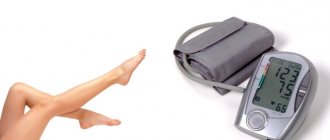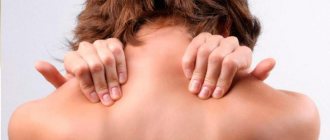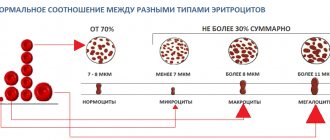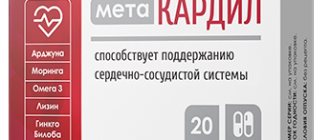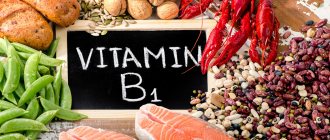The norms for blood pressure (BP), as modern medicine interprets them, change periodically. It was once believed that it was 120/80 and nothing else. Now it is believed that the upper (systolic) should not rise above 140 mm Hg. Art., and the lower (diastolic) - above 90 mm Hg. Art. If the numbers are higher, this is classified by modern medicine as hypertension and a reason to take blood pressure-reducing pills for the rest of your life.
However, Ayurveda looks at it differently. She says that blood pressure naturally increases with age. And at the age of 60 and above, the upper limit may be higher than today’s “norms”. If it does not manifest itself with any symptoms, then there is no need to worry too much - that’s what Ayurveda says. In any case, you should not knock it down, because if the body has increased the pressure, then most likely this is necessary for normal blood supply to the main organ - the brain. But if there are symptoms, then this is a deviation from health and needs to be treated.
Symptoms of high blood pressure:
- Frequent headaches.
- Dizziness, tinnitus, spots in the eyes.
- Sleep disorders.
- Dyspnea.
- Irritability, anxiety.
- Frequent heartbeat, pain in the heart area.
pharmachologic effect
Angiotensin II receptor antagonist. Angiotensin II is the main enzyme of the RAAS, which is involved in the pathogenesis of arterial hypertension, heart failure and other cardiovascular diseases.
Candesartan is a selective antagonist of angiotensin II receptors, subtype 1 (AT1 receptors). Does not exhibit agonist properties (does not affect ACE and does not lead to the accumulation of bradykinin or substance P, does not bind to receptors of other hormones, does not affect the state of ion channels involved in the regulation of the cardiovascular system). As a result of blocking the AT1 receptors of angiotensin II, there is a compensatory dose-dependent increase in renin activity, the concentration of angiotensin I, angiotensin II and a decrease in the concentration of aldosterone in the blood plasma.
Arterial hypertension
Oral administration of candesartan provides a dose-dependent, smooth decrease in blood pressure due to a decrease in peripheral vascular resistance without a reflex increase in heart rate. There is no data on the development of severe arterial hypotension after taking the first dose or on the development of withdrawal syndrome after cessation of therapy.
The onset of antihypertensive action after taking the first dose of the drug usually develops within 2 hours, the duration of the effect is 24 hours. With ongoing therapy with candesartan at a fixed dose, the maximum reduction in blood pressure is usually achieved within 4 weeks and persists throughout treatment. The addition of the thiazide diuretic hydrochlorothiazide to candesartan enhances its antihypertensive effect.
The patient's age and gender do not affect the effectiveness of the drug. Candesartan increases renal blood flow and does not change or increases glomerular filtration rate, while renal vascular resistance and filtration fraction are reduced.
Candesartan has a less pronounced antihypertensive effect in patients of the Negroid race (a population with predominantly low renin activity in blood plasma).
There are no data on the effect of candesartan on the progression of diabetic nephropathy. In patients with arterial hypertension and type 2 diabetes mellitus, candesartan does not have a negative effect on blood glucose concentrations and lipid profiles.
Heart failure
Therapy with candesartan reduces the mortality rate and the frequency of hospitalization in patients with chronic heart failure (CHF), regardless of age, gender and concomitant therapy, and leads to a decrease in the functional class of CHF according to the NYHA classification.
Candesartan is effective in patients taking concomitant beta-blockers in combination with ACE inhibitors; Moreover, its effectiveness does not depend on the dose of the ACE inhibitor. In patients with CHF and reduced left ventricular systolic function (left ventricular ejection fraction (LVEF) less than 40%), candesartan reduces peripheral vascular resistance and wedge pressure in the pulmonary capillaries.
Pharmacokinetics
Suction and distribution
Candesartan cilexetil is a prodrug. Candesartan cilexetil after oral administration is quickly converted into the active substance - candesartan, through ether hydrolysis. When absorbed from the digestive tract, it binds firmly to AT1 receptors and dissociates slowly, and does not have agonist properties.
The absolute bioavailability of candesartan after oral administration is approximately 40%. Relative bioavailability is approximately 34%. Cmax in blood serum is achieved 3-4 hours after oral administration. Plasma concentration increases linearly with increasing dose in the therapeutic range (up to 32 mg).
The degree of binding to blood plasma proteins is high (more than 99%). Vd of candesartan is 0.13 l/kg. Does not accumulate. The pharmacokinetic parameters of candesartan do not depend on the patient’s age, gender or meal time.
Metabolism and excretion
Candesartan is mainly excreted unchanged from the body by the kidneys and intestines. Slightly metabolized in the liver (20-30%) with the participation of CYP2C9 with the formation of an inactive derivative.
T1/2 of candesartan is approximately 9 hours. The total clearance is about 0.37 ml/min/kg, while the renal clearance of the drug is 0.19 ml/min/kg. After oral administration of 14C-labeled candesartan cilexetil, 26% of the dose was excreted by the kidneys in the form of candesartan and 7% in the form of an inactive metabolite, while 56% of the dose was excreted through the intestines with bile in the form of candesartan and 10% in the form of an inactive metabolite. After a single oral dose, more than 90% of the dose is eliminated within 72 hours.
Pharmacokinetics in special groups of patients
In elderly patients (over 65 years of age), the Cmax and AUC of candesartan increase compared to young patients by approximately 50% and 80%, respectively. However, the blood pressure response and possible side effects when using candesartan do not depend on the age of the patients.
In patients with mild or moderate renal impairment, the Cmax and AUC of candesartan increase by approximately 50% and 70%, respectively, while T1/2 does not change compared to patients with preserved renal function. Pharmacokinetics in patients on hemodialysis are similar to those in patients with severe renal impairment. In patients with severely impaired renal function, Cmax and AUC increase by 50% and 110%, respectively, and T1/2 of the drug increases by 2 times.
In patients with mild or moderate hepatic impairment, the mean AUC of candesartan increased by approximately 20% in one study and 80% in another study. There is no experience of use in patients with severe liver dysfunction.
Contraindications for use
- Hypersensitivity to candesartan or other components of the drug;
- lactose intolerance, lactase deficiency, glucose-galactose malabsorption syndrome;
- pregnancy;
- breastfeeding period;
- children and adolescents under 18 years of age (efficacy and safety have not been established);
- severe liver dysfunction and/or cholestasis;
- simultaneous use with aliskiren and aliskiren-containing drugs in patients with diabetes mellitus or impaired renal function (GFR less than 60 ml/min).
With caution: severe renal dysfunction (creatinine clearance less than 30 ml/min), hemodialysis, bilateral renal artery stenosis or stenosis of the artery of a single kidney, hemodynamically significant stenosis of the aortic and/or mitral valve, hypertrophic obstructive cardiomyopathy (HOCM), condition after kidney transplantation, cerebrovascular disorders of ischemic origin and ischemic heart disease, hyperkalemia in patients with reduced blood volume, general anesthesia and surgical interventions (risk of developing arterial hypotension due to blockade of the RAAS), primary hyperaldosteronism.
Five rules for preventing hypertension:
- Lead a healthy lifestyle, which includes a rational balance of work and rest, walking, active movement (sports or yoga) and a normal weight.
- Adjust your diet - after 40 years, it is ideal to become a vegetarian, but if this is difficult, then at a minimum you should remove red meat from your diet. Avoid fast food, fatty, overcooked, fried in vegetable oils, canned foods, marinades, refined foods (vegetable oils, premium wheat flour, sugar). Avoid store-bought processed foods, smoked meats, and sausages; they contain a lot of additives and salt that increase blood pressure. Choose fiber-rich foods: brown rice, nuts, seeds, wholemeal bread, fresh vegetables, herbs, fruits - to improve digestion and prevent constipation. Avoid snacking. Eat berries, they are rich in vitamins.
- Establish normal sleep - put away gadgets at least an hour before bedtime, eliminate coffee, tea and alcohol, have dinner before 18:00. Best time to sleep: from 22:00 to 6:00.
- Drink plenty of water, herbal teas with lemon balm, valerian, chamomile, and dried fruit compotes. Before bed - warm milk with spices (turmeric, nutmeg, cinnamon).
- Relieve stress with meditation, breathing exercises, and relax in shavasana (a yoga pose for relaxation).
Use during pregnancy and children
The drug Giposart is contraindicated for use during pregnancy, because it has a direct effect on the RAAS and can cause developmental disorders of the fetus (especially in the second and third trimesters of pregnancy) or have a negative effect on the newborn, including death, if the drug was used during pregnancy.
It is known that therapy with angiotensin II receptor antagonists (ARA II) can cause fetal developmental disorders (impaired renal function, oligohydramnios, delayed ossification of the skull bones) and the development of complications in the newborn (renal failure, arterial hypotension, hyperkalemia). If the fact of pregnancy is established, the drug Giposart must be discontinued as quickly as possible.
When planning pregnancy, it is necessary to transfer the patient to adequate alternative therapy.
It is not known whether candesartan is excreted in breast milk, but it is known to be excreted in the milk of lactating rats.
During treatment with Hyposart, breastfeeding should be stopped. Newborns whose mothers took Hyposart during pregnancy should be under close medical supervision due to the likelihood of developing arterial hypotension.
Use in children
The use of the drug is contraindicated in children and adolescents under 18 years of age (efficacy and safety have not been established).
Diet for hypertension and lifestyle
Avoid meat, eggs, salt, pickles, tea and coffee. Avoid smoking as it increases your heart rate. Use garlic, lemon, parsley, Indian gooseberry (amla), watermelon, grapefruit, skim milk and cottage cheese more often. Regular exercise is one of the best ways to lower blood pressure - brisk walking, jogging, swimming and athletics are good options. Laughter is the best medicine as it relieves stress and anxiety, which are the main causes of high blood pressure in modern life.
Side effects
Classification of the frequency of side effects: very often (≥1/10); often (≥1/100, <1/10); uncommon (≥1/1000, <1/100); rare (≥1/10,000, <1/1000); very rare (<1/10,000), including isolated reports.
Side effects of candesartan are mild and transient. The frequency of side effects does not depend on the dose of the drug and the age of the patient.
From the nervous system: often - dizziness, headache, weakness.
From the cardiovascular system: often - a pronounced decrease in blood pressure.
From the respiratory system: often - respiratory infections, pharyngitis, rhinitis, cough.
From the digestive system: very rarely - nausea, increased activity of liver transaminases, impaired liver function or hepatitis.
From the urinary system: often - impaired renal function, including renal failure in predisposed patients.
From the musculoskeletal system: very rarely - back pain, arthralgia, myalgia.
From the hematopoietic system: very rarely - leukopenia, neutropenia, thrombocytopenia and agranulocytosis.
Laboratory indicators: very rarely - hyperkalemia, hyponatremia, increased creatinine concentration in the blood, hyperuricemia, slight decrease in hemoglobin.
Allergic reactions: very rarely - angioedema, skin rash, itching, urticaria.
Other: exacerbation of gout, “flushes” of blood to the skin of the face.
Drug interactions
The use of candesartan concomitantly with drugs containing aliskiren is contraindicated in patients with diabetes mellitus or moderate to severe renal failure (GFR <60 ml/min/1.73 m2).
The simultaneous use of candesartan with hydrochlorothiazide, warfarin, digoxin, oral contraceptives (ethinyl estradiol/levonorgestrel), glibenclamide, nifedipine and enalapril has been studied; no clinically significant pharmacokinetic interaction was observed.
Candesartan is slightly metabolized in the liver (via the CYP2C9 isoenzyme). There was no effect on the CYP2C9 and CYP3A4 isoenzymes; the effect on other cytochrome P450 isoenzymes is currently unknown.
Antihypertensive drugs potentiate the antihypertensive effect of candesartan. Experience with the use of other drugs acting on the RAAS shows that the simultaneous use of the drug and potassium-sparing diuretics (spironolactone, eplerenone, triamterene, amiloride), potassium preparations, salt substitutes containing potassium, or other drugs that can increase the concentration of potassium in the blood serum ( for example, heparin) can lead to the development of hyperkalemia.
With the simultaneous use of lithium preparations and ACE inhibitors, cases of transient increases in the concentration of lithium in the blood serum and the development of toxic effects have been observed. A similar effect is possible with the simultaneous use of lithium drugs and angiotensin II receptor antagonists, which requires periodic monitoring of the concentration of lithium in the blood serum during the combined use of these drugs.
With simultaneous use of ARA II and NSAIDs, including selective COX-2 inhibitors and non-selective NSAIDs (for example, acetylsalicylic acid at a dose of more than 3 g / day), the antihypertensive effect of candesartan may be reduced.
Double blockade of the RAAS
As with ACE inhibitors, simultaneous use of ARB II and NSAIDs increases the risk of decreased renal function, including the development of renal failure, which leads to hyperkalemia in patients with impaired renal function. This combination should be used with caution, especially in elderly patients. All patients should receive sufficient fluids; it is necessary to monitor renal function at the beginning of therapy and thereafter.
Causes
In Ayurveda, the cause of high blood pressure is considered to be disturbances in all three doshas: Vatta, Pitta and Kapha. Excessive consumption of alcohol and salt leads to an imbalance of Pitta, anger, stress, anxiety affect Vatta, fatty foods, and a sedentary lifestyle upset the balance of Kapha.
Aggravating factors:
- Heredity - hypertension or diabetes is diagnosed in older family members.
- Other diseases are diabetes, kidney failure, obesity, glomerulonephritis, etc.
Prevention and treatment of high blood pressure in Ayurveda
A group of doctors from the UK, Canada and Australia in 2013 conducted a study, Evidence of Lifestyle Modification in the Management of Hypercholesterolemia, where they proved that non-pharmacological methods of treating hypertension: lifestyle correction, diets - reduce the risk of coronary heart disease. But Ayurveda has known about this for millennia.
Dosage
The drug is taken orally, 1 time/day, regardless of the time of meal.
Arterial hypertension
The recommended initial and maintenance dose of Giposart is 8 mg 1 time / day. If necessary, the dose can be increased to 16 mg 1 time / day. The maximum antihypertensive effect is achieved within 4 weeks of therapy. The maximum daily dose is 32 mg 1 time/day.
If adequate blood pressure control is not achieved at the maximum daily dose, it is recommended to add a thiazide diuretic (eg, hydrochlorothiazide) to therapy. This may enhance the antihypertensive effect of Giposart.
In patients at risk of developing arterial hypotension (including patients with reduced blood volume), it is recommended to start therapy with a dose of 4 mg.
In patients with mild to moderate renal impairment (creatinine clearance 30-80 ml/min/1.73 m2), including patients on hemodialysis, the initial dose of the drug is 4 mg. The dose should be titrated depending on the therapeutic effect. Clinical experience with the use of the drug in patients with severe renal impairment or end-stage renal failure (creatinine clearance less than 15 ml/min) is limited.
The initial daily dose of the drug in patients with mild to moderate liver disease is 4 mg. It is possible to increase the dose if necessary. There is no clinical experience with the use of the drug in patients with severe liver dysfunction and/or cholestasis.
Chronic heart failure
The recommended initial dose of Giposart is 4 mg 1 time / day. An increase to a maximum daily dose of 32 mg 1 time / day or to the maximum tolerated dose is carried out by doubling the dose with an interval of at least 2 weeks.
Elderly patients and patients with impaired renal or liver function do not require adjustment of the initial dose of the drug.
The safety and effectiveness of the drug Giposart in children and adolescents under 18 years of age have not been established.
Concomitant therapy
The drug Giposart can be used simultaneously with other drugs for the treatment of CHF, including ACE inhibitors, beta-blockers, diuretics, cardiac glycosides or combinations of these drugs.
Overdose
Symptoms: excessive decrease in blood pressure, dizziness, tachycardia. Isolated cases of drug overdose (up to 672 mg of candesartan cilexetil) have been described, resulting in the recovery of patients without serious consequences.
Treatment: if there is a pronounced decrease in blood pressure, the patient should be placed in a supine position with his legs raised; further - carry out measures aimed at increasing the volume of blood volume (administration of 0.9% sodium chloride solution intravenously). If necessary, sympathomimetic drugs can be prescribed. It is recommended to carry out symptomatic therapy under the control of vital functions of the body. Hemodialysis is ineffective.
Ayurveda's perspective
Ayurvedic lineage for the treatment of hypertension aims to identify the root causes of this condition and the use of herbs that can eradicate the cause of this problem. In order for this to happen, it is necessary that digestion improves and the digestive fire intensifies. Toxins that have already accumulated in the heart channels must be eliminated. Finally, through relaxation techniques - including meditation, yoga and pranayama - it is recommended to ensure that the mind remains calm and stable.
